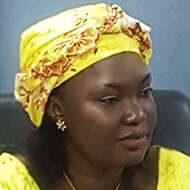The P4H Network created a political economy framework to help P4H country focal persons (P4H-CFPs) advance social health protection (SHP) and health financing (HF) reforms. Piloted in Cambodia and Cameroon in 2023, it aids P4H-CFPs in understanding national political economies for better collaboration and reform.
The centrality of political economy in SHP and HF reforms is widely recognized.[1] Political economy, encompassing political, economic and social factors of a country, has been shown to influence reform uptake and implementation,[2] and ultimately the success of any HF reform.[1] The methodology of political economy analysis (PEA) is less clear, with various frameworks that attempt to bridge the gap between theory and practice.[1],[3],[6] Application of PEA varies by country owing to differing political economy conditions.
Successful universal health coverage (UHC) reform in any country entails policy dialogues and coordinated actions of at least three main sectors that fall under ministries of finance, health, and social security or social protection to support adequately funded and equitable SHP and HF for all.
P4H approach to political economy of partnership
The P4H Network’s results framework includes innovation in the field of SHP and HF. A salient example of an established P4H innovation is the Leadership for UHC programme, which has been successfully implemented in Africa and Asia since 2014. A more recent innovation evolved from an exploration of the political economy of partnership. Its development involved engagement with scholars and expert practitioners to create a framework, design instruments and pilot test the P4H Political Economy Tool for partnership. The research team that ran the pilot included a research fellow and two P4H-CFPs.
P4H-CFP’s work in different countries suggests that, in addition to technical and social skills, P4H-CFPs need political acumen. The political economy approach to partnership can support the facilitation of policy dialogues and was developed for this purpose.
The proposed political economy conceptual framework for partnership is based on the so-called 4Is – interests, institutions, ideas, ideology – or four variables that influence health policy outcomes:
(1) interests of decision makers and various other actors,
(2) formal political institutions and informal institutions such as the legacies of past policies or cultural norms,
(3) ideas such as specific policy solutions, information, and prevailing concepts and paradigms that influence thinking on a subject, and
(4) ideology which may represent a particular worldview.[7]
In the conceptual framework, enhancing collaborations is placed at the center of the three interconnected sectors in SHP and HF collaborations. In the graphic at the top, this center is represented by “P4H” because it is a role of P4H to act as an honest broker and build frameworks for country, regional and global action. The framework methodologically offers the guide and practical steps to explore the link and relationship between the political economy variables and partnerships (see figure). The links and relationships draw some key lessons in developing and promoting partnerships at global, regional, and country levels.
Application of the framework to partnerships
The methodology for application of the framework involves four sequential steps: first, the identification of the topic of interest, or problem statement; second, a literature review of peer reviewed and grey literature on the identified topic; third, a series of semi-structured interviews with key informants following a topic guide; and last, action plan development, review and mapping.
The P4H Network chose to pilot the framework in Cambodia and Cameroon to probe (1) whether these countries were experiencing substantial and deeply rooted blockages to reform, (2) the extent of the P4H Network’s involvement in the reform process and (3) the complexity of effecting desired reforms. The work started with understanding what problems CFPs were grappling with, to identify the topic or problem statement. Then, the pilot research team carried out a literature review, which enabled the team to identify key informants to interview. The interviews aimed to deepen the team’s understanding of the informants’ ideologies, ideas, and interests, much as P4H-CFPs might aim to understand the ideologies, ideas and interests of interlocutors in other countries where they may be conveners and facilitators of collaborative work. To facilitate these interviews, the team developed a topic guide organized around the four variables in the conceptual framework.
Findings from the pilot: applicability and usefulness for collaboration
The pilot helped identify how different stakeholders could more effectively collaborate on SHP and HF reforms in the pilot countries. Collaboration would involve coordinating actions of various partners to achieve common objectives and working to identify and overcome constraints and bottlenecks. The pilot also clarified that P4H’s partnership work both informs and promotes communication among development partners, and between development partners and government bodies.
The implementation of the four steps confirmed the importance of precisely identifying the problem to be tackled, and probing until a consensus was reached. The literature review increased the P4H-CFPs’ knowledge of the topic or problem and clarified each stakeholder’s policies and positions. These insights strengthened the ability of the P4H-CFPs to probe respondents during interviews. The value of self-reflection by P4H-CFPs – part of the P4H Political Economy Tool – to identify their own personal views, values and positioning was confirmed. Interviewing key stakeholders enabled the P4H-CFPs to gather new information, which strengthened their understanding of each actor’s position and their vision of how to foster greater collaboration.
Despite the inherent complexities of SHP and HF for UHC, the application of the political economy framework to partnerships proved useful in both countries.
In Cameroon, the application of the tool enriched the P4H-CFP’s ability to think about and discuss issues pertaining to the political economy of UHC with a wide range of actors. In Cambodia, the step-by-step analytical action encouraged the P4H-CFP to learn about the issues to tackle to spur reform. The literature review greatly increased P4H-CFPs’ understanding of the reform context within the country. The interviews highlighted the differences in ideas and ideologies between actors on HF questions, such as the extent to which fiscal constraints supersede the concern for health as a human right, or on alignment issues, such as the consensus that women and children be prioritized. The pilot helped to identify factors which impeded policy progress such as costs, differing stakeholder priorities, varying flexibility among partners, and changes in the policy landscape.
Further, the pilot raised interest in PEA among other concerned actors. In Cameroon, all respondents asked that the findings be shared, providing the P4H-CFP with an opportunity to organize a workshop around points of blockages and alignment. This activity is expected to be an open discussion between actors that will foster greater trust and collaboration among them.
The pilot also revealed that the framework requires customization to country contexts. The research team observed that P4H-CFPs and other actors in different country contexts might benefit most by engaging with political economy of partnership as an ongoing approach rather than a one-off exercise.
Potential of the tool
The 4Is framework is widely used to analyze political economy and is well suited to unpack the political economy of partnership in a particular context. In this pilot it has enabled P4H-CFPs to identify a path that enhances collaboration between stakeholders and helped them refine their understanding of the reform landscape. The subtleties between the concepts of ideas and ideology are difficult to grasp. Reviewing the conceptual framework may therefore be useful, as experts working on collaborations for SHP and HF reforms make use of it in different country contexts. Analytical challenges remain while at the same time the Political Economy Tool will be a useful addition to the P4H-CFPs‘ work.
What is proposed, developed, and applied by the P4H Network is an essential first step towards fostering greater collaboration between partners, conserving their different interests and positioning in decision making and implementing activities. While this work was initiated by the P4H Network as part of its mandate to innovate, as its application evolves, countries must come to fully own the process.
References
[1] Sparkes SPB, J B; Özçelik, E A. Political Economy Analysis for Health Financing Reform. Health Systems & Reform 2019: 183-94. https://pubmed.ncbi.nlm.nih.gov/31369319/
[2] Hanson K, Brikci, B, Erlangga, D, et al. The Lancet Global Health Commission on financing primary healthcare: putting people at the centre. The Lancet Global Health 2022. https://pubmed.ncbi.nlm.nih.gov/35390342/
[3] DFID. Political Economy Analysis – How To Note, 2009. https://thepolicypractice.com/political-economy-analysis-how-note-dfid-2009
[4] Stuckler D FAB, Basu S and McKee M. The political economy of universal health coverage. First Global Symposium on Health Systems Research. Montreux: WHO; 2010. https://researchonline.lshtm.ac.uk/id/eprint/2157/
[5] Reich MR. Political economy analysis for health. Bull World Health Organ 2019; 97(514). https://iris.who.int/handle/10665/326282
[6] Rizvi SS, Douglas R, Williams OD, Hill PS. The political economy of universal health coverage: a systematic narrative review. Health Policy and Planning 2020; 35(3): 364-72. https://www.researchgate.net/publication/338432543
[7] Fox A, Reich, MR. The politics of universal health coverage in low and middle-income countries: a framework for evaluation and action. Journal of Health Politics, Policy and Law 2015; 40: 1023-60. https://pubmed.ncbi.nlm.nih.gov/26195606/





